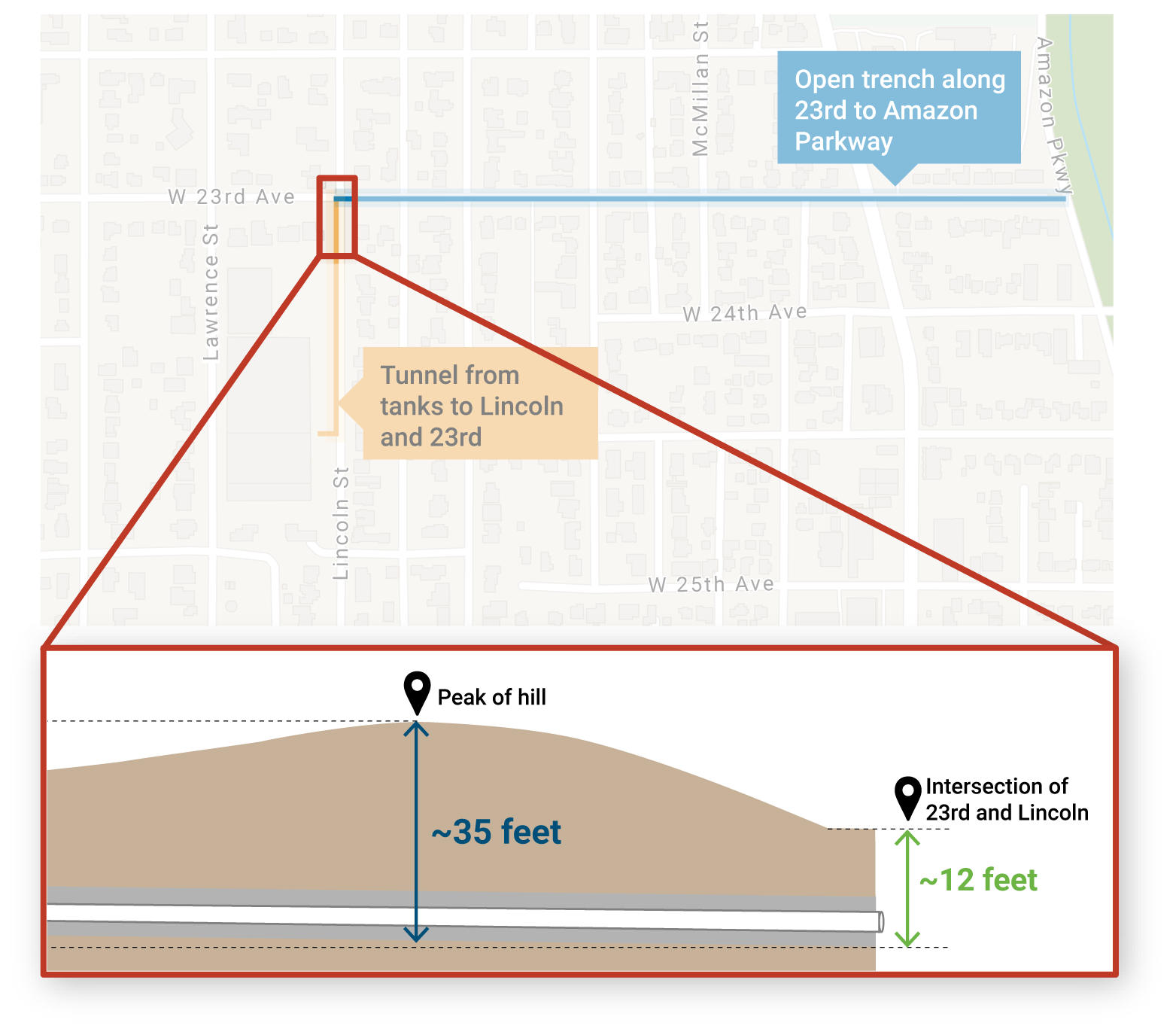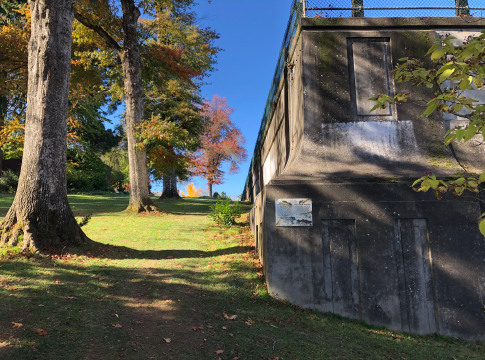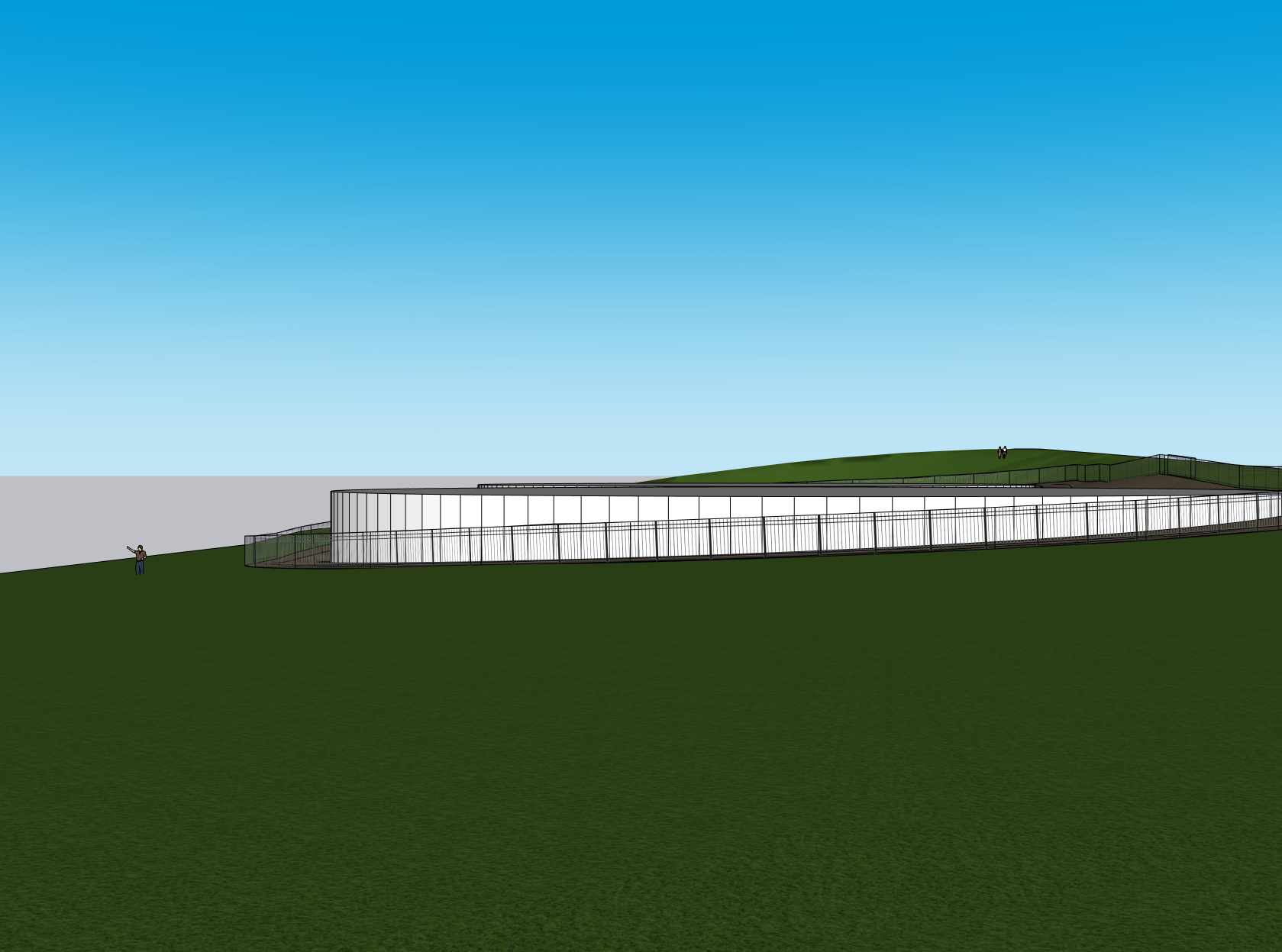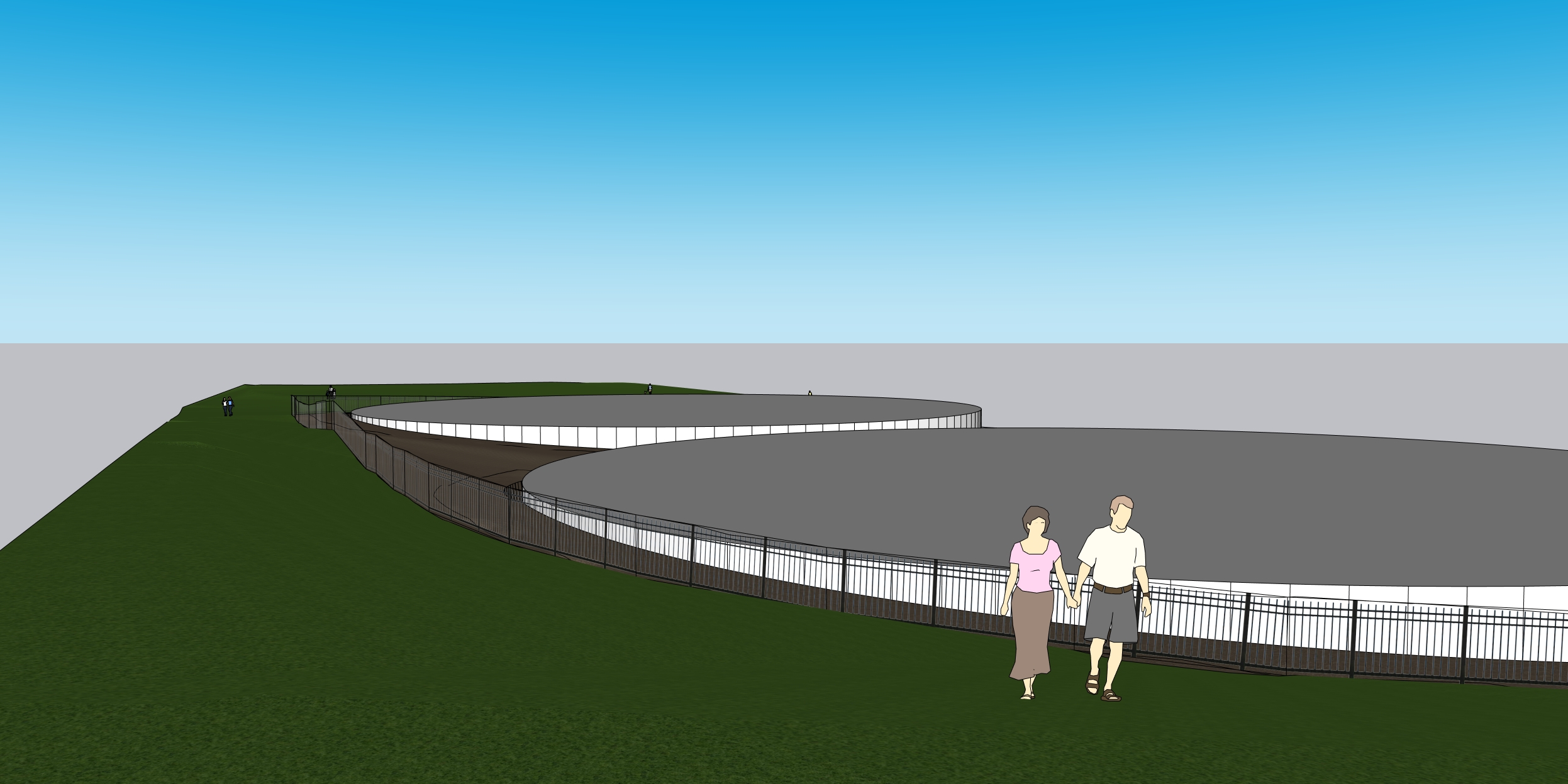EWEB will install new hardened pipelines to connect the new College Hill Water Storage Tanks to the system. The pipelines will be installed along Lincoln St and 23rd Ave using a mix of tunneling and open trench construction methods.
Learn More: Why is Tunneling Necessary? | Tunneling Process | Street and Intersection Closure | Frequently Asked Questions

Why is Tunneling Necessary?
There is a hill on Lincoln Street that crests just north of the project site on the way to 23rd. If the team tried to install the pipeline with a traditional open cut method, it would create an approximately 35-foot-deep trench in that location. Having that deep of a trench is not practical or safe in a residential construction area.
Tunneling will enable EWEB to bore under the hill, increasing safety and decreasing disruption. By the time it reaches the intersection of 23rd and Lincoln, the tunnel will be approximately 12 feet deep, which will allow for the installation of the remainder of pipeline via open trench.
Tunneling Process
General process for tunneling
The tunnel boring machine will use a cutter head to grind through soil and rock underground. As it grinds forward, it will simultaneously install a tunnel casing to reinforce the excavated area.
Material that is excavated from underground is called “spoil.” The contractor will use a separation system to process the soil and separate rocks from mud and debris. The rocky material may be reused as fill on the site, depending on the quality of the material after processing, and the mud and debris will be transported for disposal.
Tunnel configuration
Once the tunnel casing is in place, pipelines will be installed through the tunnel to the intersection of 23rd and Lincoln. The tunnel will then be filled with grout to protect and reinforce the pipes.

Pipes in the tunnel will feed into a vault just outside of the tanks. From there, water will be routed to the individual inlet/outlet pipe boxes for each tank. The pipes connecting to each tank are smaller diameter (24” for inlet/outlet and 18” for drain) as they fill/drain water for a single tank.
Street and Intersection Closure
The intersection at Lincoln St. and W. 23rd Ave. will be closed during tunneling to allow contractors to excavate a shaft to retrieve the tunnel boring machine. Lincoln will be closed to through traffic, likely at 26th Avenue. Local access will be provided to residents of Lincoln Street throughout the tunneling phase.
Closures will are tentatively scheduled for August 4 and last until the end of November. Signage will be placed ahead of time and neighbors should plan alternative routes.
Frequently Asked Questions
Why are new pipelines needed?
Just like the reservoir, its connecting pipelines are aged and in need of replacement. The new pipelines will provide a reliable and durable connection from the new water storage tanks to the EWEB system.
When will the tunneling happen?
Tunneling is expected to start the week of August 4 and least until the end of November. In advance of the the tunneling work, the intersection at Lincoln and 23rd will be completely closed while the tunnel is built. Neighbors should plan alternative routes.
When will the open trench construction happen?
The construction schedule is still tentative, but EWEB estimates the installation of new pipeline via open trench along 23rd Ave will start in mid-2026. 23rd Ave will be closed in small sections during the pipeline construction. Residents will be notified well in advance of any closures once the schedule is set, and work begins.
More Information About the College Hill Project
EWEB is replacing the leaky and antiquated reservoir with new, modern drinking water storage tanks built to withstand major earthquakes.
Learn more about the design of the new earthquake-resistant water storage tanks at College Hill.








